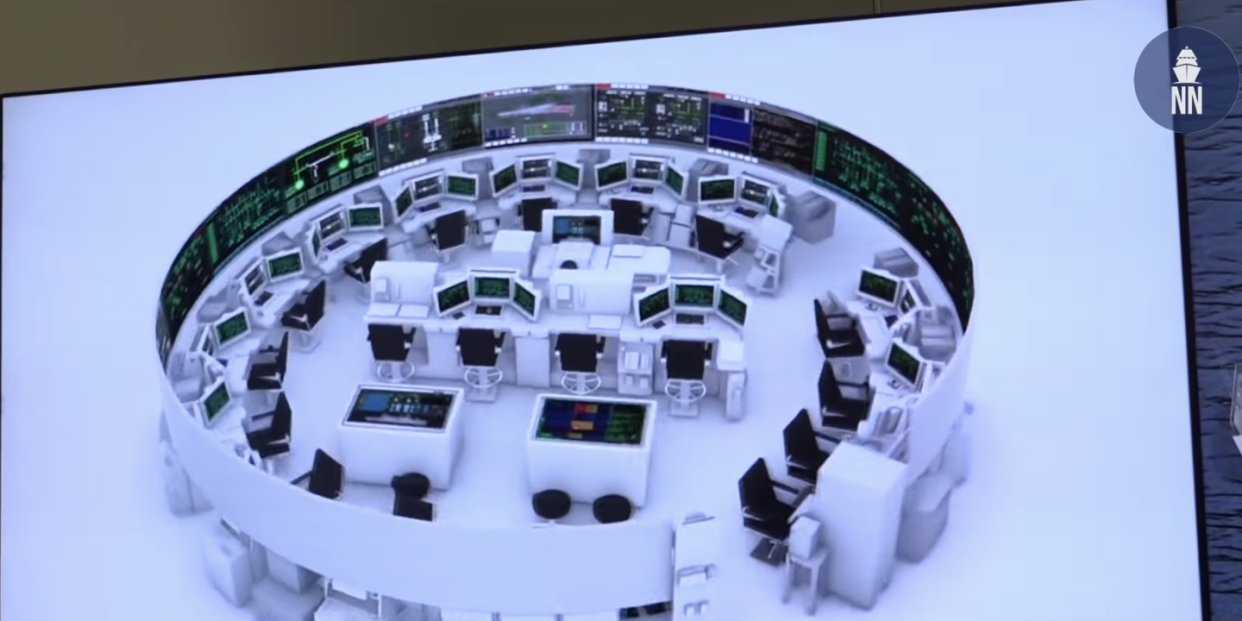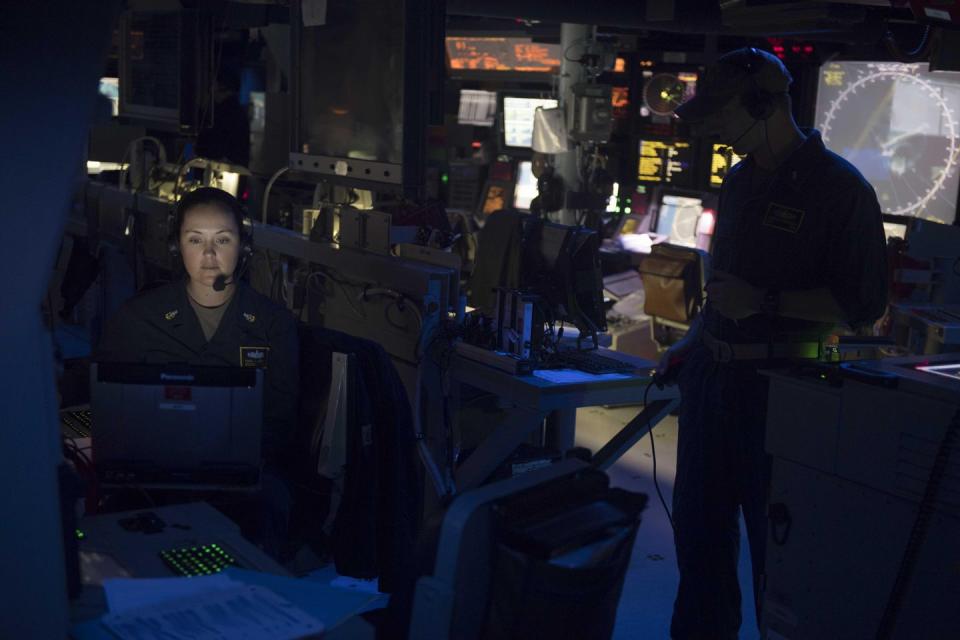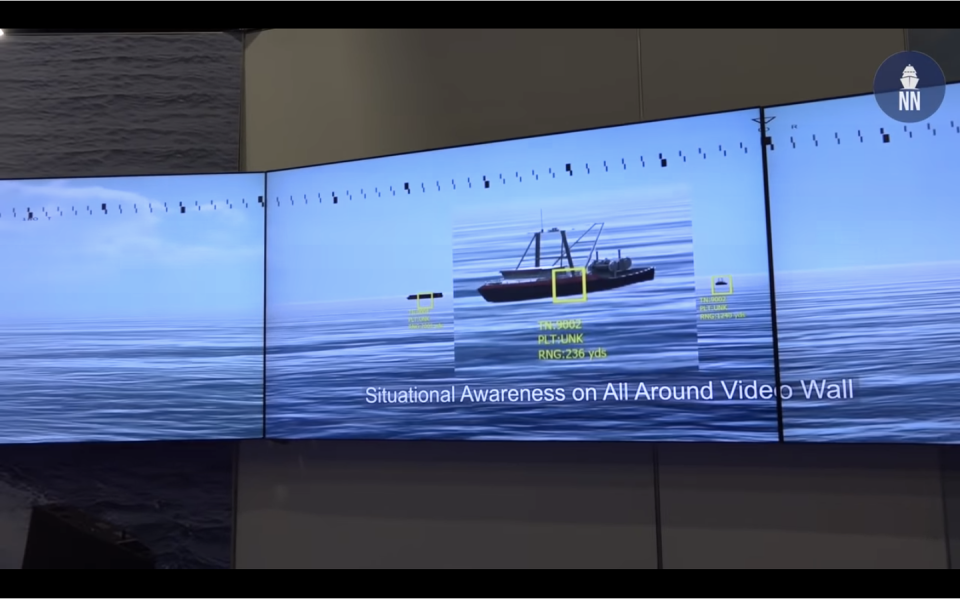This Frigate's Combat Information Center Is Straight Out of 'Star Trek'

In 2022, the Japan Maritime Self Defense Force will take possession of a frigate with one of the most powerful combat information centers (CICs) in the world. Normally a CIC, a dimly lit room isn’t much to get excited about, but this is different. The “Advanced Integrated CIC” set to go on the ship features a 360 degree wall of video monitors, augmented reality, and large tactile tables for mission planning and other tasks. The new system looks like the bridge of a Star Trek starship come to life-and in some respects, it's even cooler.
Japan has one of the largest and advanced surface ship fleets in the world and the new ship design, 30FFM, is meant to maintain the country’s naval dominance. The designation “30FFM” means Fast Frigate, Multi-Mission, design approved in the 30th year of the reign of Emperor Akihito.
The stealthy frigate, according to Naval Today, will displace 5,500 tons, measure 433 feet long, and will primarily have an anti-submarine warfare mission. It will rely on a high level of automation, sailing with a crew of just 90. It will have a 57-millimeter rapid fire deck gun, 16 vertical launch missile cells for carrying surface to air, anti-submarine, and anti-ship missiles, two smaller rapid fire guns, and a SeaRAM point defense weapon system.
Unlike other ships, the real innovation in 30FFM comes from the location where the ship will be fought. A warship’s combat information center is nestled deep in the bowels of the ship, typically under and slightly behind the bridge, to protect it from enemy fire. There the ship captain receives a steady stream of information from various ship departments, particularly sensors, and uses it to navigate the ship or open fire on enemy threats.
CICs are boxy, gloomy, windowless rooms with sailors sitting at banks of consoles, data scrolling down screens in front of them.

30FFM introduces a dramatic reinterpretation of the CIC. The ship’s nerve center is reimagined as a circular room ringed in almost 360 degrees (hey, they need a way to get inside) with large, high-definition monitors. These monitors are attached to a network of cameras facing outwards in all directions from the ship. This allows any member of the CIC to simply look up and see outside the ship in all directions-a huge improvement over current arrangements. The circular room arrangement also makes it easier to see other work stations and their data, a problem on rectangular-shaped CIC rooms.

At the bottom of the screens are the degree lines of a huge compass, allowing crew members to look at an object of interest on the screen and immediately know where it is in relation to the boat. The walls can display other information, such as a giant red arrow to indicate the ship’s direction of travel, magnified images of nearby objects, and even a deck-by-deck view of the ship from a damage control perspective. At night, the virtual wall turns a green-black color, projecting an infrared night vision view of the ship’s surroundings.
The giant virtual wall of screens can also be used to protect other information. Engine control, damage control, fire fighting control, and other data can be called up and superimposed on the monitors, allowing everyone in the CIC to glance up and see the data instead of having several people crowd around a small workstation monitor.
In addition to the giant screens 30FFM will have two large tables with built-in monitors and likely touch screen controls. This would be useful for examining digitized navigational charts and other data collaboratively, perhaps with the ship’s captain and his department heads to plan courses of action.
The U.S. Navy, by comparison, is lagging behind in CIC technologies. Even the combat information center of the USS Zumwalt, lead ship of the most advanced U.S. Navy destroyers of all time, already looks dated by comparison.
While Zumwalt introduces key technologies, including stealth to the surface ship platform, it’s clear Japan can bring major innovations to the warship table.
Source: Naval News
('You Might Also Like',)

